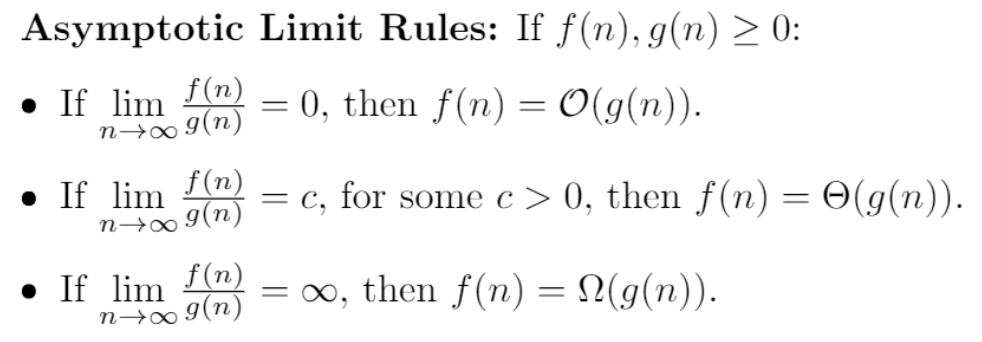Introduction
Suppose a recursive function is defined as follows: , where and are constants and is a given function. It means we divide the problem into subproblems, each of size , and the cost of dividing and combining the subproblems is .
Theorem
If , then:
$$ T(n)=\left\{ \begin{aligned} &O(n^{log_ba}) & \text{if } a>b^d \\ &O(n^dlog n) & \text{if } a=b^d \\ &O(n^d)& \text{if } a
Proof
After reconsideration, I found that the initial proof is just kidding. Here is a detailed proof: https://www.luogu.com.cn/article/w3avh1ku
Notation
- : Big O notation, which is used to describe the upper bound of a function. Typically, when , (M is a constant).
- : Theta notation, which is used to describe the tight bound of a function.
- : Omega notation, which is used to describe the lower bound of a function.
We can draw a recursion tree to analyze the time complexity of the recursive function:
| Number | Time |
|---|---|
| 1 | |
If , we get $$\begin{aligned}T(n) =& f(n) + af(\frac{n}{b}) + a^2f(\frac{n}{b^2}) + \cdots + a^{log_b n}f(1)\ =&f(n)(1+\frac{a}{b^d}+\frac{a^2}{b^{2d}}+\cdots+\frac{a^{log_b n}}{b^{dlog_b n}})\end{aligned}$$
Suppose , then . We can use the geometric series formula to simplify the equation: $$T(n)=f(n)\frac{1-q^{log_b n+1}}{1-q}$$
- : Noticing that , so .
- : .
- : .
Application
- Large number addition: (We can divide each number into two parts and use three registers to calculate the following additions), , , , , .
- Merge sort: , , , , , .

